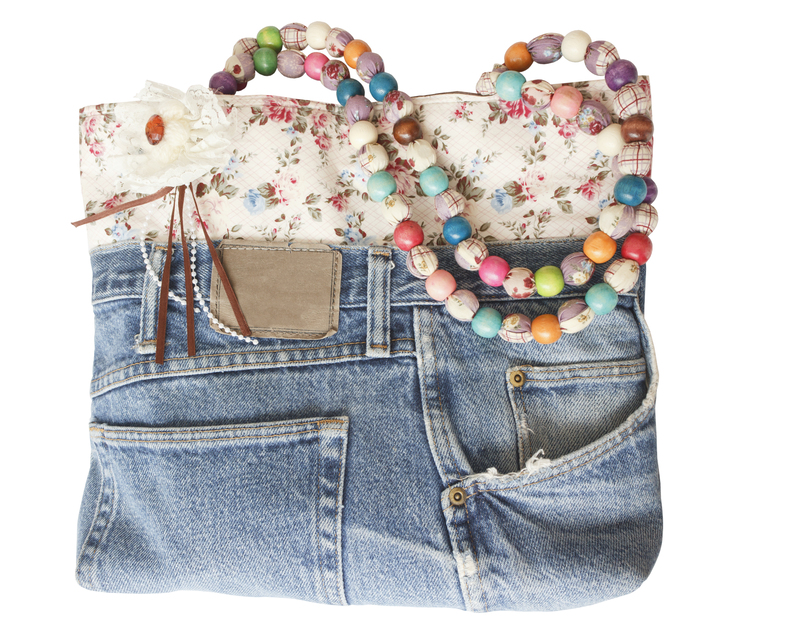Turning Trash to Treasure: Pot and Pan Recycling
In today's era of sustainable living and environmental awareness, the concept of recycling extends far beyond bottles and cans. Pots and pans recycling is gaining momentum as households and businesses look for creative ways to reduce waste and repurpose old, unwanted cookware. This comprehensive guide explores everything you need to know about turning your otherwise discarded pots and pans into valuable resources. Discover why pot and pan recycling matters, how to do it right, and innovative ways you can upcycle your kitchenware into treasures.

Why Recycling Pots and Pans Is Important
Millions of pots and pans are discarded every year, ending up in landfills where their materials languish for centuries. Most cookware is made from metals such as aluminum, stainless steel, cast iron, and copper--resources that can be reused or recycled indefinitely. Recycling not only conserves natural resources but also reduces the energy required to produce new items, slashes landfill waste, and curbs carbon emissions.
- Conserving Resources: Metals extracted from recycled cookware consume far less energy than mining new materials.
- Reducing Landfill: Recycling pots and pans keeps bulky items out of landfills, freeing up space and reducing environmental hazards.
- Economic Benefits: The recycling industry creates jobs and generates revenue by breathing new life into old materials.
Metals Commonly Used in Pots and Pans
Most kitchen cookware is crafted from one or more of the following metals. Understanding the material helps ensure proper recycling:
- Aluminum--Lightweight and excellent for heat conduction, aluminum pans are among the most commonly recycled.
- Stainless Steel--Durable, rust-resistant, and valuable, stainless steel is easily recycled into new products.
- Cast Iron--Although heavy, cast iron is prized in the scrap metal industry and can be melted down for new uses.
- Copper--While less common, copper cookware is highly sought after by recyclers due to its high value.
How to Recycle Pots and Pans Properly
Recycling kitchenware isn't always as straightforward as tossing cans or bottles into a blue bin. Here's a step-by-step guide to ensuring your old pots and pans are responsibly recycled:
1. Identify the Material
Check if your pots and pans are made from materials accepted by local recycling centers. Most facilities accept metal cookware, but composite or non-metallic parts (like plastic handles or glass lids) may need to be removed.
2. Prepare Your Cookware
- Clean thoroughly: Remove any leftover food, grease, or residue.
- Disassemble: Detach plastic, silicone, or wooden handles as these components are rarely recyclable with the metal base.
- Sort: Group cookware by metal type when possible, as recyclers process different metals separately.
3. Contact Local Recycling Programs
Many cities offer curbside recycling for metal items, while others require you to drop off items at a scrap metal yard. Call your local waste management or search online for "pot and pan recycling near me" to find the best option.
4. Explore Retail Take-Back Programs
Some large retailers--such as home goods stores and kitchenware brands--run take-back programs where you can drop off used cookware for proper recycling or reuse. These programs often offer discounts on new purchases in exchange.
5. Donate Usable Cookware
If your pots and pans are still functional but no longer needed, consider donating them to local shelters, thrift stores, community kitchens, or friends. Reusing is an even better option than recycling in terms of environmental impact.
Creative Ways to Repurpose Old Pots and Pans
Not ready to part with that old skillet or saucepan? Turning trash into treasure can be fun and rewarding. Here are some inventive ways to upcycle your old kitchenware:
- Garden Planters: Turn cast-off pots into charming planters for flowers, herbs, or succulents. Simply drill a drainage hole, fill with soil, and plant!
- Bird Baths or Feeders: Shallow pans make perfect bird baths or feeders when mounted on a post or hung from a tree.
- Wall Decor: Create unique kitchen wall art by arranging pretty or vintage pans on hooks or shelves.
- Organizers: Use deep pots as stylish holders for utensils, craft supplies, or gardening tools.
- Serving Trays: Transform skillets or pizza pans into rustic serving trays for parties.
Upcycling: Tips for Safety and Style
When repurposing pots and pans:
- Ensure they are clean and free of sharp edges.
- Use non-toxic paints if decorating for planters or home decor.
- Choose sturdy pieces for outdoor use to withstand the elements.
The Environmental Impact of Responsible Cookware Disposal
Improper disposal of pots and pans contributes to resource depletion and environmental pollution. Metals that could be reused are wasted, while non-biodegradable coatings or plastics may leach toxins into soil and water. By practicing pot and pan recycling or creative upcycling, you directly contribute to a healthier planet.
- Reduced Energy Usage: Recycling metals uses far less energy compared to virgin ore mining and refining processes.
- Lower Carbon Footprint: Every ton of recycled metal saves tons of greenhouse gases from entering the atmosphere.
- Encouragement of Circular Economy: Keeping resources in use for as long as possible minimizes the need for new extraction and manufacturing.
Innovations in Cookware Recycling
Companies and communities worldwide are finding inventive ways to deal with old pots and pans. Emerging solutions and technologies include:
- Automated Sorting: Modern facilities use advanced sorting lines to separate metals by type for efficient recycling.
- Product Take-Back Programs: More cookware brands are offering collection points for end-of-life products.
- Recycled Content Products: Some manufacturers now produce new cookware using a significant portion of recycled metals.
- Community Workshops: Local maker spaces and DIY centers often host pot and pan upcycling workshops, building community around sustainability.
Frequently Asked Questions about Pots and Pans Recycling
Can Non-Stick Cookware Be Recycled?
Old non-stick pots and pans can usually be recycled, but you may need to remove the non-stick coating first. Some recycling centers accept cookware regardless, while others require the coating to be stripped. Always check with your local facility.
Are Glass Lids Recyclable?
Most glass lids aren't accepted in curbside recycling programs due to the type of glass used. However, some specialized recycling centers will take them. Alternatively, upcycle glass lids as unique suncatchers or photo frames!
What Should I Do with Broken Handles or Plastic Parts?
Remove and dispose of plastic or wooden handles in the trash unless they are marked as recyclable. Some creative DIYers craft handles into hooks or drawer pulls.
Can I Recycle Enamelware?
Enamel-coated cookware has a steel or iron core that is recyclable. However, the enamel itself isn't, so recycling centers may require you to separate the core or only accept items with minor enamel coating.
Best Practices for Sustainable Cookware Choices
While recycling and upcycling are vital, making sustainable decisions at the time of purchase also plays a crucial role. Here's how to make eco-friendly choices with your pots and pans:
- Prioritize Durability: Invest in high-quality cookware that will last for years, reducing the need for frequent replacement.
- Choose Easily Recyclable Materials: Stainless steel and cast iron are the best options for longevity and recyclability.
- Avoid Harmful Chemicals: Steer clear of cookware with potentially hazardous coatings or materials.
- Seek Out Recycled Content: Support brands that use recycled metals in their manufacturing process.

Conclusion: Small Actions, Big Results
Turning your trash into treasure through pots and pans recycling is an impactful step towards a cleaner, greener planet. By understanding the recycling process, seeking out donation and reuse opportunities, and exploring upcycling, you extend the lifecycle of your kitchenware and help conserve precious resources. Whether you drop off your old cookware at a recycling center or transform it into functional art for your home, every effort counts.
Take action today--scan your kitchen for unused or damaged cookware and consider the best recycling or upcycling option. Encourage your friends and family to join you. Together, we can close the loop and turn yesterday's trash into tomorrow's treasures!
Key Takeaways
- Pots and pans are highly recyclable due to their metal content.
- Prepare cookware for recycling by cleaning and removing non-metal parts.
- Donate, recycle, or repurpose--choose the most sustainable route for disposal.
- Support brands that use recycled materials and offer take-back programs.
- Upcycling old cookware can add beauty and utility to your home and garden.
Resources for Pot and Pan Recycling
- Earth911: Searchable database for local recycling options
- Call2Recycle: Find drop-off locations and recycling advice
- EPA: How Do I Recycle?
If you're passionate about reducing waste and building a sustainable future, pot and pan recycling is a simple yet powerful habit to add to your daily life. Start today, and turn your kitchen trash into lasting treasure!